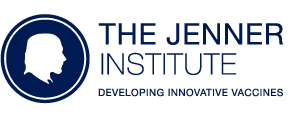
Tomáš Hanke
BSc MSc PhD
Professor of Vaccine Immunology
- Distinguished Professor, Kumamoto University, Japan (2015-2023)
HIV Vaccine Development
Targeting HIV Where It Hurts
The world needs an HIV-1 vaccine.
Our research aims to contribute to the development of a safe and effective HIV-1 vaccine by inducing protective T-cell responses. We test novel vaccine strategies in pre-clinical models while focusing on iterative improvements in vaccine design (immunogen and delivery) driven by human data. I coordinate a programme of Experimental Medicine trials testing the third generation of candidate killer T-cell vaccines called HIVconsvX in combination with cutting-edge tools for HIV cure and prevention.
HIV-1 diversity is astonishing and remains the single biggest challenge for the development of an HIV-1 vaccine. Viruses with highly variable genomes, such as HIV-1, mutate rapidly to evade T-cell and antibody recognition, with immune pressure selecting the fittest escaped variants to outgrow. This immediately suggests that epitopes that are easily mutated and able to escape with minimal fitness cost are less protective than those located in protein regions constrained by function. Our working hypothesis posits that (re)focusing vaccination on killer T cells from the onset of virus infection or reactivation, specifically targeting the most conserved and thus vulnerable regions of HIV-1, which are common to most global variants and difficult to mutate, will help to slow and control HIV-1. If the conserved region vaccine strategy proves effective, its cross-clade reach would enable global deployment, making it universal despite the diversity of HIV-1. To this end, we demonstrated in several phase 1 and 2 trials in key populations the induction of robust, broadly specific T cells, which inhibited viruses representative of four major global clades and provided a signal of durable drug-free virus control in vaccinated individuals living with HIV-1. The latest version of the vaccine design, called HIVconsvX, which uses conserved regions and further increases match to global HIV-1 variants through a bivalent mosaic design, entered clinical evaluations in 2019 and its testing is progressing across five continents. These trials will provide the first hints of efficacy (or lack of) and generate unique human samples to inform the next iterations of the vaccine.
Recent publications
-
Exploitation of Unconventional CD8 T-Cell Responses Induced by Engineered Cytomegaloviruses for the Development of an HIV-1 Vaccine
Journal article
Bruton J. and Hanke T., (2025), Vaccines, 13, 72 - 72
-
In danger: HIV vaccine research and development in Europe.
Journal article
Tatoud R. et al, (2025), PLOS global public health, 5
-
Safety and broad immunogenicity of HIVconsvX conserved mosaic candidate T-cell vaccines vectored by ChAdOx1 and MVA in HIV-CORE 006: a double-blind, randomised, placebo-controlled phase 1 trial in healthy adults living without HIV-1 in eastern and southern Africa
Journal article
Chanda C. et al, (2025), The Lancet Microbe
-
Safety and immunogenicity of the ChAdOx1-MVA-vectored conserved mosaic HIVconsvX candidate T-cell vaccines in HIV-CORE 005.2, an open-label, dose-escalation, first-in-human, phase 1 trial in adults living without HIV-1 in the UK.
Journal article
Borthwick N. et al, (2024), The Lancet. Microbe
-
PD-1 blockade enhances HIV-1 vaccine-induced CD8⁺ T-cell responses in PWH early ART-treated
Preprint
Marin M. et al, (2024)

